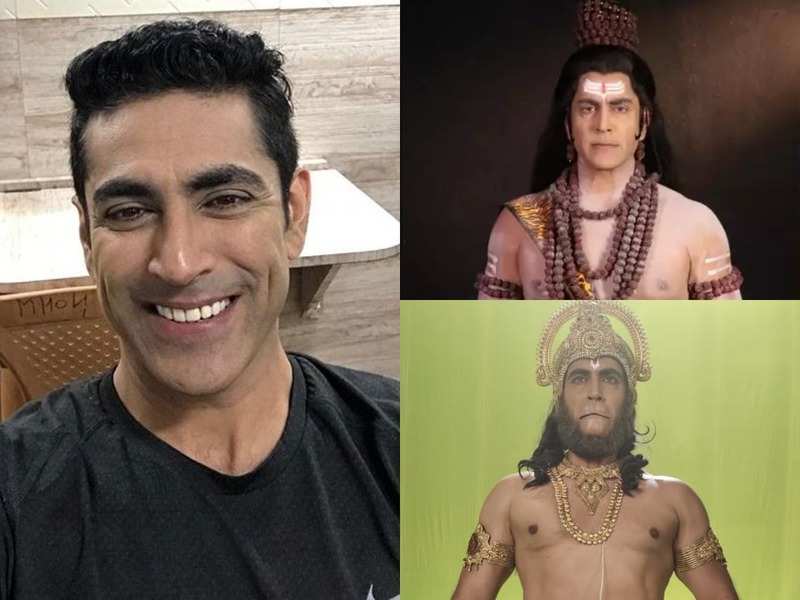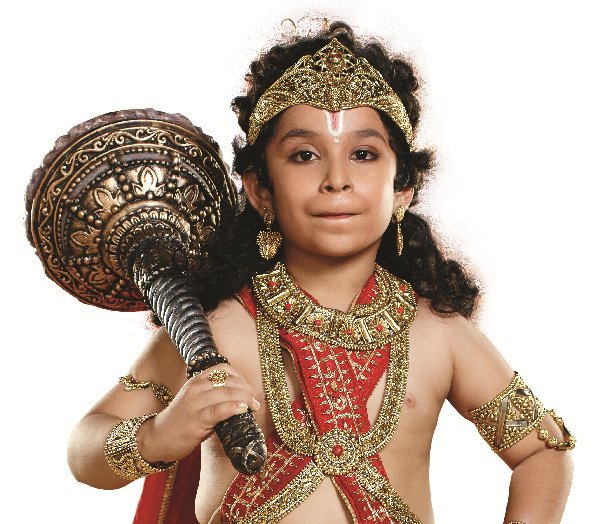


The telecast of a religious epic to popular acclaim created the sense of a nation coming together, seeming to confirm the idea of Hindu awakening.” What resulted was perhaps the largest campaign in post-Independence times, irrevocably changing the complexion of Indian politics.

In a 2000 interview with India’s Frontline magazine, Rajagopal said that when the Indian government began broadcasting the Ramayan to nationwide audiences, “This violated a decades-old taboo on religious partisanship, and Hindu nationalists made the most of the opportunity. “It was absolutely like going to the temple – people would do pooja before the show, put garlands and tikka (red marks) on the TV that was the kind of feeling people had for the show,” explains the actor Arun Govil, who played Lord Ram. While in a Hindu temple setting, darshan is about worshippers gazing at statues of gods, with the Ramayan, Hindus were able to visually commune with Hindu gods (Ram, Laxman, Sita, Hanuman) via the TV.
HANUMAN TV SHOW SERIES
My grandmother’s rituals mirrored temple conventions and the series brought the temple experience of darshan – visual communion – into homes and public spaces where it was screened. Sunday mornings were the highlight of my grandmother’s week: before the broadcast, she would burn incense and perform pooja (prayer ritual) in the home shrine, before sitting on the floor, barefoot and covering her head with a chunni, to watch the show, along with three generations of family.
HANUMAN TV SHOW SERIAL
The BBC’s Delhi correspondent Soutik Biswas wrote in 2011: “I remember the soap nearly shutting down India on Sunday mornings in the mid-1980s – streets would be deserted, shops would be closed and people would bathe, and garland their TV sets before the serial began.” “Trains would stop at stations, buses would stop, and passengers would disembark to find a roadside place with a TV – the crowds were so big, people would be unable to see or hear the TV but the point was about being present, being there.”

As Arvind Rajagopal, professor of media studies at NYU and author of the book Politics After Television, explains, in cities across northern India public life ground to a halt. The Ramayana’s special place in India’s cultural memory explains why the TV series became a phenomenon, but no one could have predicted that the Ramayan would become a participatory, weekly act of devotion. In the run-up to Diwali (this year on 27 October), Ramlilas – folk plays of the Ramayana – are performed in schools, halls, markets, and on street corners, in cities, towns and villages, just as the nativity is celebrated before Christmas among Christian communities. The victory of light over dark and Lord Ram’s return home to the kingdom of Ayodhya is the basis of Diwali, the festival of light celebrated by Hindus, Sikhs and Jains, that also marks New Year for some communities. What this historical TV show reveals about China today Ramanand Sagar’s TV adaptation of the epic Hindu poem the Ramayana tells the story of crown prince, Lord Ram, who is banished into exile for 14 years, and must rescue his kidnapped wife Sita from the clutches of a ten-headed demon. Whereas in London I had to pester my parents to watch Neighbours and EastEnders, in Delhi they insisted I join them, my grandparents, aunt, uncle and cousins to watch the Ramayan. On those trips, I’d swap Batman comics for Amar Chitra Katha comic books, depicting wondrous Hindu mythology cans of cherry coke for glass bottles of Campa Cola and four terrestrial TV channels for one, Doordarshan. As a teenager growing up in late-1980s London, visits to New Delhi to see my extended family were like stepping into another world.


 0 kommentar(er)
0 kommentar(er)
